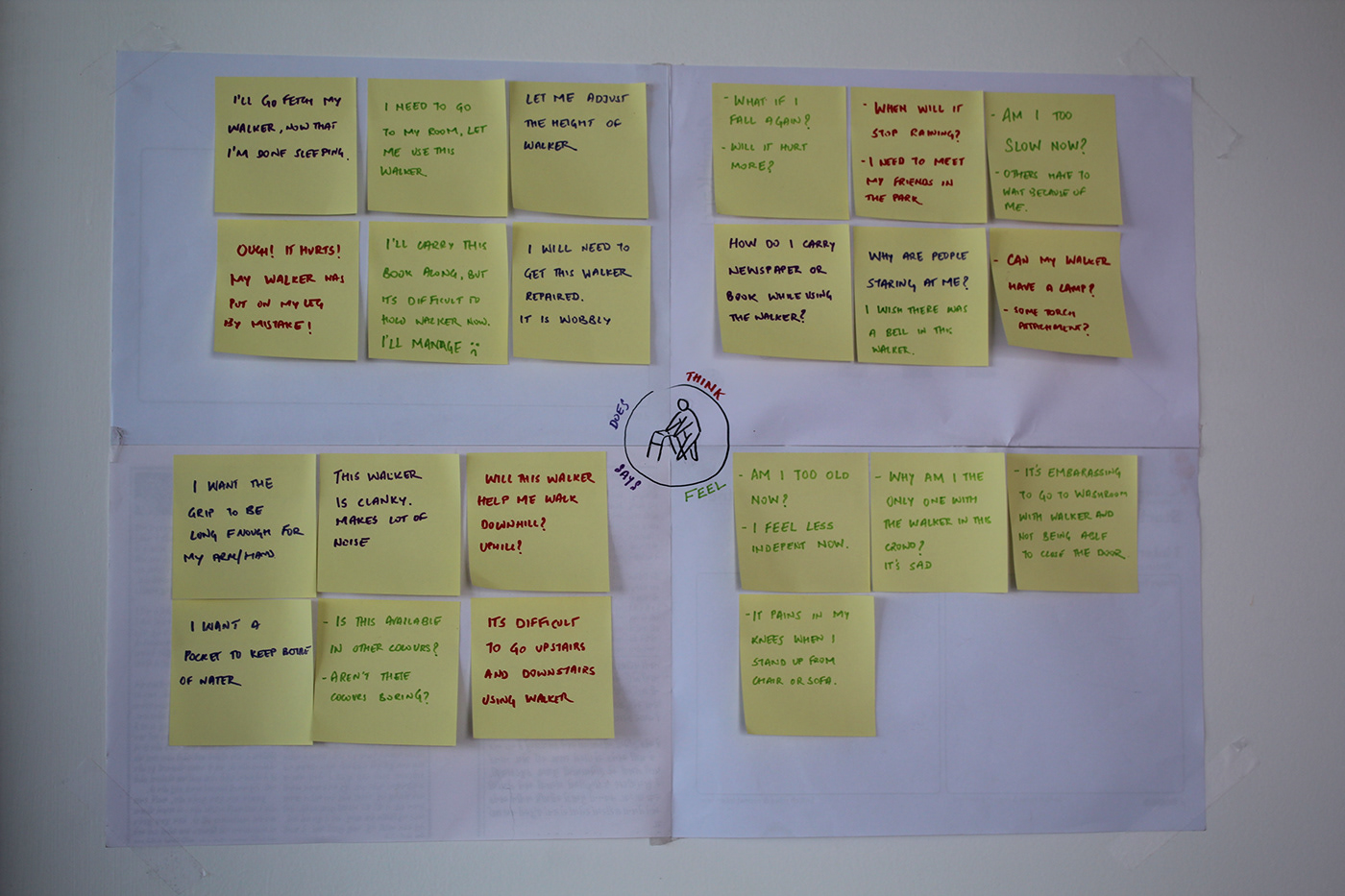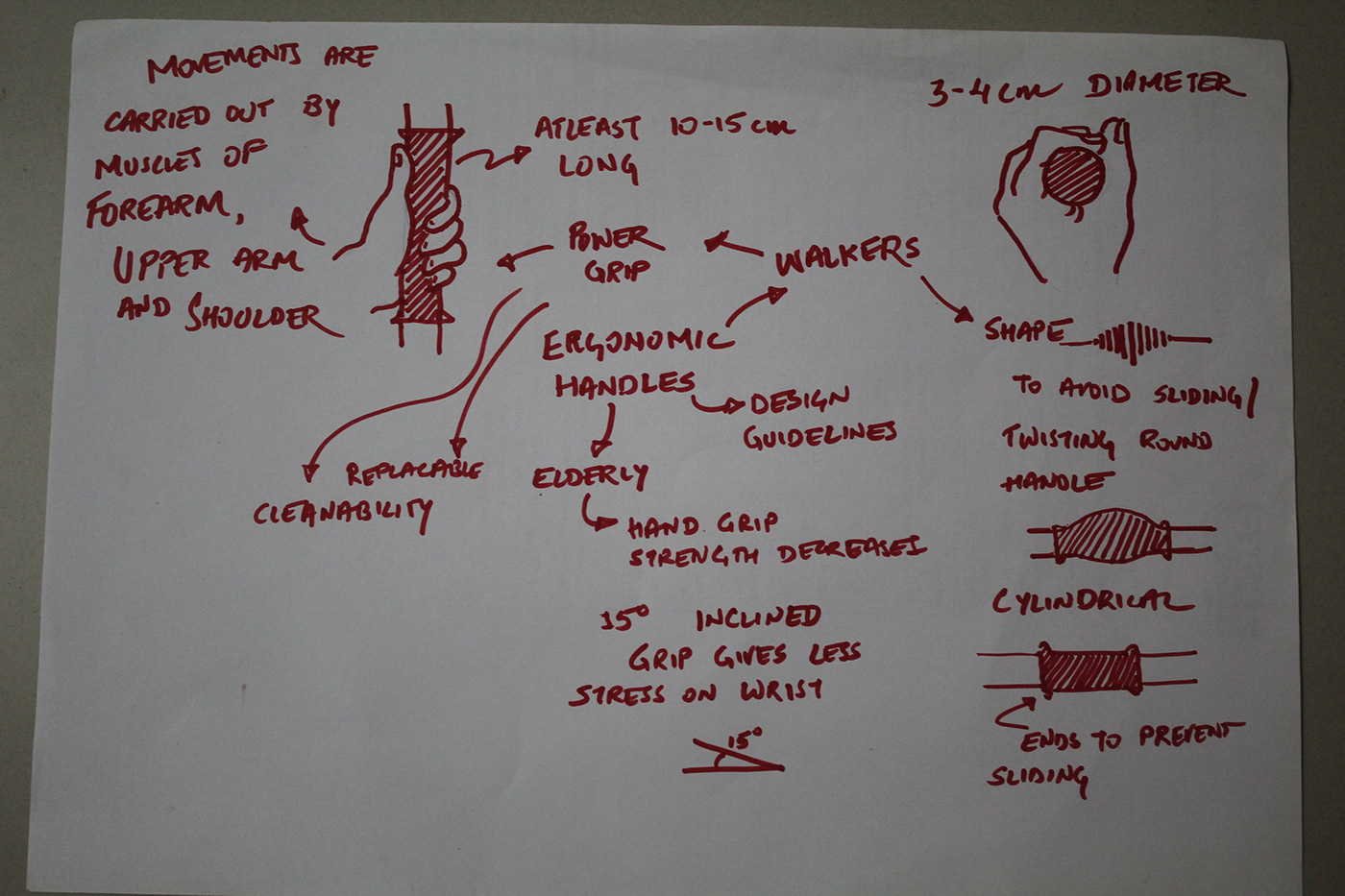Redesigning walker for elderlY
This was a self-initiated project as part of my academic studies under the guidance of my mentor faculty Dr Nilanjana Bairagi. I wanted to design a more elegant and dignified assistive device for elderly in Indian context.



Introduction:
Population of the elderly is projected to reach 19% of total population by 2050 as per UNFPA report. Stroke is a leading cause of death and disability in India as per National Center for Bio-technological Information, NCBI.
Prevalence rate in India:
262/1,00,000 in Rural Areas
424/1,00,000 in Urban Areas, with 42% death rate.
Imbalance and falls are very common among the elderly with or without stroke experiences.
Around 70% of falls take place at home and 20% of them need hospitalization.
Objectives:
1.To study the challenges in the process of physical rehabilitation of elderly.
2.To understand the problems with existing assistive devices.
3.To re-design an improved assistive device using user-centered approach.
Research Approach: User Centered Design

Research Findings:

1. The walker in use is shaky/ wobbly.
2. The grip of the walker is very short.
3. The user has to take care that walker remains stable.
4. User feels dependent, old and weak.
5. Sometimes the walkers leg get placed on the slipper which might lead to fall.
6. The walker makes a lot of noise.

1. User has to look behind while sitting to avoid falling.
2. The user gets locked once he/ she sits. The walker needs to be put away.
3. There should be a horn/ alarm button for safety.
4. A pocket should be added to hold a bottle of water, bag to hold newspapers, books, etc.
5. A pocket should be added to carry newspaper or a religious book.
6. The walker should have a seat.
7. There should be some color option.

Design Challenge:
To re-design a walker considering stability, durability and reliability while maintaining visual esteem of the device and dignity of the user.
3D Modelling:

Prototyping:
Different materials like steel, aluminum, PVC and GI were explored as a part of research. Some indigenous materials like bamboo and rattan cane were also explored. Rattan cane was used to design the walker due to its properties of being light in weight, durability, stability and ability to bend without breaking.







User Testing and Feedback:
The prototype was tested by at least 10 elderly persons. It was tested in both old age cum rehabilitation homes as well as real home environments where the volunteer elderly lived.


1.The prototype was perceived to be more elegant and dignified compared to the conventional metal frame walkers.
2.It was aesthetically more pleasing.
3.The users mentioned about need for rubber stubs at the legs.
4.The product was found to be novel and hence users were willing to use it.
5.Rubber-tyre tubes were up-cycled to make the rubber stubs for the walker.
6.The walker was found to be more stable compared to the conventional metal frames.
7.The users felt that our walker was less noisy as there were no nuts and bolts in it.
8.Seat could be added, platform could be added to make it multi-functional.
Concept Sketches and Process:





Summary:
The aim of this study was to redesign walkers for the elderly. Different challenges are present in the existing medical walkers, mostly used during rehabilitation of stroke by the elderly like lack of stability, stark medical appearance and feeling psychologically dependent.
The issues were identified during ethnographic study in real home setup and old-age homes.
A user-centered design research approach was taken for redesigning walker for adults. Majority of users felt existing walkers lacked functionality to facilitate daily tasks, aesthetic value and it affected their self-esteem. It also made them feel weak and disabled.
Taking into account these challenges, designs were conceptualized, different materials were explored. And during the exploration, elegant and indigenous material like rattan cane was used in designing the walker unlike metal frames. Most of the users found the redesigned cane walker to be unique, better in aesthetic value, light in weight and more functional. The psychological impact of feeling disabled was also significantly reduced with the new design based on natural material.




